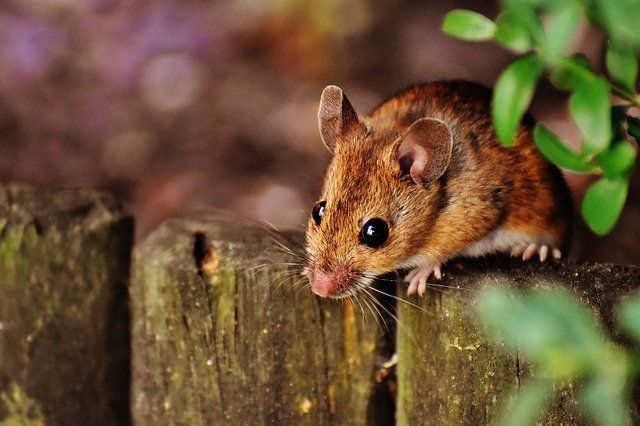Avoiding Common Mouse Control Mistakes in 2025
February 20, 2025
Effective Approaches to Prevent and Eliminate Mouse Infestations in Your Home

Mice are more than just a nuisance; they pose serious health risks and can cause extensive damage to your property. As we progress into 2025, it’s crucial to be aware of common pitfalls in mouse control and to adopt effective strategies to keep these pests at bay.
Common Mistakes in Mouse Control
- Underestimating the Problem
Seeing a single mouse might make homeowners believe it’s an isolated incident. However, mice reproduce rapidly; spotting one often indicates a more significant infestation. Ignoring early signs can result in a full-blown problem that’s harder to manage. - Improper Use of Traps and Baits
Placing traps haphazardly or using ineffective baits can make your control efforts futile. Mice are cautious creatures, and poorly positioned traps or the wrong bait can cause them to avoid traps altogether. - Neglecting Entry Points
Failing to identify and seal entry points allows mice continuous access to your home. Mice can squeeze through openings as small as a dime, making thorough inspection and sealing of gaps essential. - Overreliance on DIY Methods
While do-it-yourself methods can offer temporary relief, they often don’t address the root of the problem. DIY efforts may fail without proper knowledge and tools, allowing the infestation to persist. - Ignoring Sanitation Practices
Poor sanitation provides mice with ample food sources. Leaving food out, not securing garbage, and neglecting to clean up spills can attract mice and sustain an infestation.
Updated Strategies for Effective Mouse Control
- Conduct Thorough Inspections
You should regularly inspect your home for signs of mice, such as droppings, gnaw marks, and nesting materials. Pay attention to hidden areas like attics, basements, and behind appliances. - Seal Entry Points
Identify and seal all potential entry points using materials like steel wool, caulk, or metal mesh. Focus on areas around pipes, vents, and foundation cracks. - Use Traps Strategically
Place traps along walls and in areas where you’ve noticed mouse activity. Use a variety of traps, such as snap traps and live traps, and choose baits like peanut butter or chocolate, which are known to attract mice. - Maintain Cleanliness
Keep your home clean and free of food debris. Store food in airtight containers, clean up spills promptly, and ensure garbage is sealed and disposed of regularly. - Consider Professional Pest Control
If the infestation persists or is widespread, it’s advisable to consult professional pest control services. Professionals have the expertise and tools to eliminate mice and prevent future infestations effectively.
Preventing and controlling mouse infestations requires vigilance and proactive measures. By avoiding common mistakes and implementing updated strategies, you can protect your home from the health risks and damage associated with mice. Remember, early detection and prompt action are key to effective mouse control.
Critter Repellent All Natural Animal Repellent Blog

The last thing you want to see running around your house is a mouse. And where there is one, there are more. Whether it’s mice, ants, spiders, squirrels, or any other type of rodent, bird, or insect infestation, ignoring those critters can get very expensive in the long run. When it comes to remediating or protecting your home from infestations, the cost of doing nothing can lead to a big dent in your wallet. Keeping house pests at bay is important, especially if you’re planning to put the home on the sales market. How much does it cost to keep the house and property pest-free? That depends on where you live, what types of services needed, and how often the home is treated. But one thing is for sure, it’s easier (and more cost-effective) to prevent house damage than to fix everything after critters have chewed up wires, plumbing, foundation, and the yard. Potential Structural Damage Squirrels, moles, voles, rats, and mice are part of nature, but the damage that even one of these critters can do to a home can run into thousands of dollars. With sharp teeth that never stop growing, squirrels and rodents must “file down” their chompers so they don’t interfere with eating and drinking. Thus, a squirrel’s chewing habits can damage house support beams, siding, and anything else that holds the structure up. The costs to repair the building depend on the severity of the damage. Birds’ nests and clogged gutters are signs that unwanted critters are in the building’s drainage system. Replacing damaged gutters can cost several thousand dollars—to start. On average, it’ll cost between $1,600 and $5,200 (depending on size, materials, and labor costs). Wiring and Insulation Chewed-up electrical wiring is not only a hassle but it can be very dangerous. Mice, rats, squirrels, and other critters will gnaw through wires, not knowing that they can electrocute themselves but worse — start a house fire. Homeowners won’t necessarily see exposed wires around the house. Examining the house structure and wiring allows owners to know what to budget for. Pests and vermin living in the attic may tear up insulation to use for nesting materials. Depending on the size of the house, insulation costs can be anywhere from $1,600 to $8,000 on average. Termites When it comes to destructive insects, termites are at the top of the list. These icky little bugs chew through wood almost as quickly as a cartoon buzzsaw. And the worst thing? In general, homeowners’ insurance does NOT cover termite damage. Signs of termite infestation and damage include: Chewed up or hollow wood Blisters or buckling in the flooring Discarded termite wings Bubbling paint Strips of mud tubes along crevices Damaged support beams Tapping sounds in the walls The cost of repairing termite damage can range from a few hundred to a few thousand dollars—or more, depending on what part of the house is torn up and what needs to be done. Preventing termites in the yard and hiring a professional exterminator are two ways of keeping these hungry critters away from your home. Pest Entry Points Cracks and crevices are easy access points for mice, insects, wasps, and other pests. Unscreened vents and windows, loose shingles and siding, and chimney gaps are entry points for bugs and mice. Not having trees and shrubs around the perimeter of the house won’t prevent squirrels and mice from coming onto your property, but keeping greenery away from the structure would deter critters from having direct access to it. Perceived Value Whether your house is currently for sale or it’s a plan for the future, having pests and vermin roaming around the property can keep the buyers away. Among the financial considerations, house-hunting taps the emotions of the would-be buyer. No matter what the item is, perceived value is a customer’s view of whether it is worth the money. An infested home has lost its marketing value, especially if a mouse runs across the floor during the negotiating stage. The cost of doing nothing when you should be doing something can lead to a huge repair bill and maybe even a home improvement loan or second mortgage on your house. Ignoring the problems won’t make them go away. If wildlife and insects are damaging your home, do something about it sooner than later.











